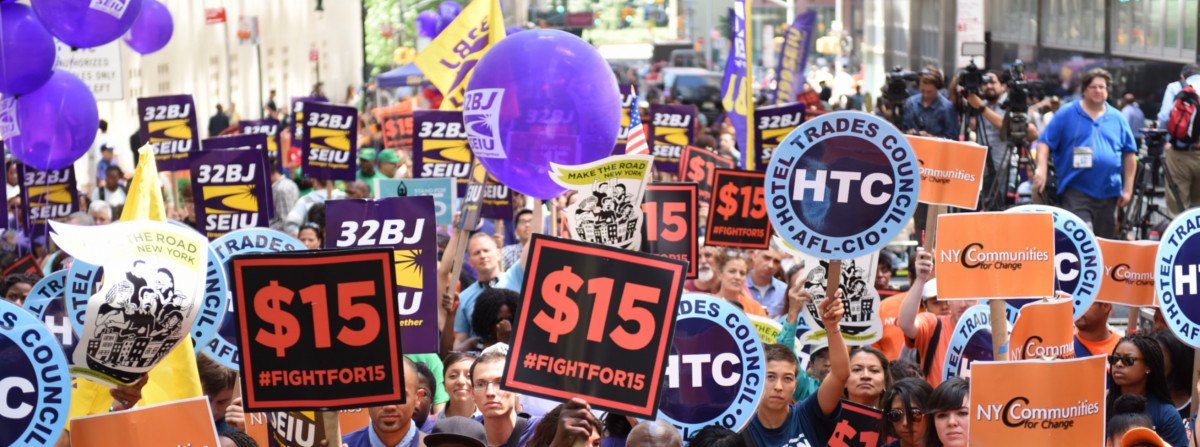
The federal minimum wage was introduced in 1938 during the Great Depression under President Franklin Delano Roosevelt. It was initially set at $0.25 per hour and has been increased by Congress 22 times, most recently in 2009 when it went from $6.55 to $7.25 an hour. 29 states plus the District of Columbia (DC) have a minimum wage higher than the federal minimum wage. 1.8 million workers (or 2.3% of the hourly paid working population) earn the federal minimum wage or below.
Proponents of a higher minimum wage state that the current federal minimum wage of $7.25 per hour is too low for anyone to live on; that a higher minimum wage will help create jobs and grow the economy; that the declining value of the minimum wage is one of the primary causes of wage inequality between low- and middle-income workers; and that a majority of Americans, including a slim majority of self-described conservatives, support increasing the minimum wage.











